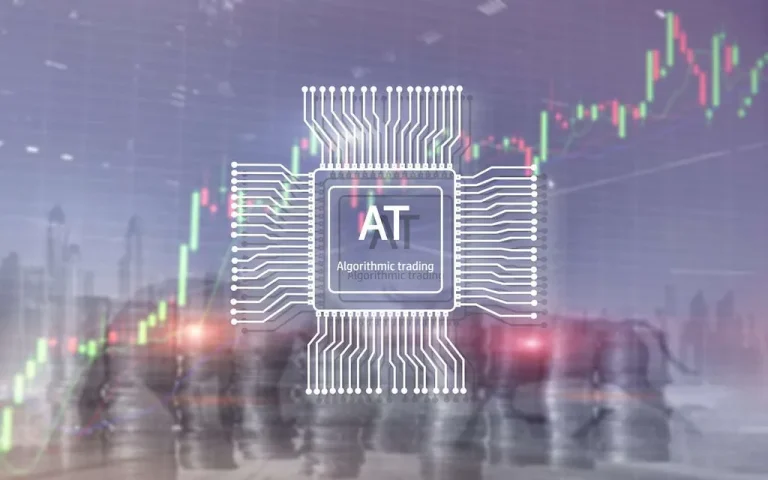Content
In line with Central Bank of Bahrain’s regulations, SICO and BHM Capital can collectively hold no more than 3% from the total issued shares of GFH. Alternatively, liquidity provider vs market maker anyone can perform a special deposit to fund the AMM as if it were new. LP tokens use a special type of currency code in the 160-bit hexadecimal „non-standard“ format.
Collaboration examples between brokers and liquidity providers
A market maker can also be an individual trader, who is commonly known as a local. The vast majority of such market makers work on behalf of large institutions due to the lot sizes needed to facilitate the volume of purchases and sales. Another important responsibility of market makers is to maintain https://www.xcritical.com/ a stable spread. The spread refers to the difference between the buy and sell price of a financial instrument.
- The term „market maker“ refers to a firm or individual who actively quotes both sides of a market in a particular security by providing bids and offers (known as asks) along with the market size of each.
- These are typically banks and other financial firms that buy and sell large quantities of assets to ensure their availability.
- A valuable resource for our listed-company community, DMMs offer insights, while making capital commitments, maintaining market integrity, and supporting price discovery.
- This permits traders to enter and exit positions quickly and efficiently.
- 360T’s technology enables LPs to make their trading desks more efficient, freeing up time and resources that can be deployed in support of the most important elements of their business.
Tier 1 and Tier 2 liquidity providers
A tier 1 LP can single-handedly impact the price stability of minor currencies on the market with their ability to purchase and sell substantial amounts in short periods. Liquidity providers have direct access to the interbank Forex market, whereas market makers participate in specific markets or instruments as designated participants. Brokers‘ partnership with different LPs grants access to a wider range of assets and instruments which allows brokers to offer various investment options to their clients. LPs‘ partnership with brokers helps them access exposure to untouched asset classes, which enables them to expand their reach. LPs provide a pool of assets (stocks, currencies, etc.) open for buying and selling, ensuring smooth transactions without significant price fluctuations.
Two Classes of Market Participants
Market makers and liquidity providers offer essentially the same service — which is, you guessed it, liquidity. Liquidity itself is a multi-faceted concept but is nonetheless essential to the strength of a financial market. A liquidity provider can bid LP Tokens to claim the auction slot to receive a discount on the trading fee for a 24-hour period.
The Executive Guide to Digital Asset Adoption
In addition, the article will tell about the advantages of cooperation with each of these liquidity sources. All five exchanges have a wide bid-ask spread, but the NBBO combines the bid from Exchange 1 with the ask from Exchange 5. As liquidity providers, market makers can quote or improve these prices. Market makers (liquidity providers) offer extra assurance to investors. Market makers’ task is to maintain bid and offer orders of a certain size within a defined price spread on a continuous basis.
Brokerage companies need to provide active traders with a broad order book, especially while talking about fewer in-demand pairs. The insufficient volume of an order book leads to price slippage and gaps. As such, traders face the situation when they cannot buy and sell currencies by the market price. Traders access zero spreads (no differences between bid and ask prices).To summarize the difference between market maker vs liquidity provider, remember that their roles diverge. MMs are responsible for FX inflows and outflows, maintaining the market active while a liquidity provider is a bridge between brokerage companies and market makers. From this blog post, you have seen the way brokers and liquidity providers work together and the importance of their collaboration.
In the second chart, we also observe increased positioning below the price range prior to market upticks. Given that this pool is denominated in USDC/WETH, this pattern suggests that Market Makers anticipated a rise in the price of ETH. We demonstrate this with an example from one of the most active pools, the USDC/WETH 0.05% pool. We detecte market uptrends in this pool around October-November 2023 and March 2024, which coincided with an increase in out-of-range positioning. SICO and BHM Capital will commence their activities starting from 22nd July 2024. The approval is valid until 11th July 2025 and any extension will be subject to prior regulatory approvals.
DMMs apply their market experience and judgment of dynamic trading conditions, macroeconomic news and industry-specific intelligence, to inform their decisions. A valuable resource for our listed-company community, DMMs offer insights, while making capital commitments, maintaining market integrity, and supporting price discovery. They work under the B-book model, taking the other side of their customer’s trades and do not pass the orders to liquidity providers. But the important thing stock investors want to know is how market makers are regulated when it comes to quoting the bid-ask spread.
The Tokyo Exchange Group combined the Tokyo Stock Exchange and the Osaka Securities Exchange into one unit in 2013. In addition to infrastructure and data, the group provides „market users with reliable venues for trading listed securities and derivatives instruments.“ London is home to one of the largest stock exchange groups in Europe.
They matter because they ensure that the securities markets continue to function. Market makers must commit to providing markets for securities on both the buy and the sell sides. Toronto is considered to be Canada’s financial capital, and it’s the location of the country’s leading stock exchange. The Toronto Stock Exchange (TSX), which is the country’s largest exchange, is owned by TMX Group.
We run our operations on 100+ production servers, ensuring 24/7 liquidity for 200+ markets. We’ve always been transparent about not supporting fake volumes or price pumps. Large trading firms serve as market makers across the capital markets, including those for equities, fixed-income securities, and derivatives. When a retail investor buys a security from a trading firm that is acting as principal, the firm fills the order using its own inventory, allowing it to benefit from the bid-ask spread. Ultimately, the main objective of liquidity providers is to facilitate trading in the market, make it more efficient, and generate a profit from their activities. Many exchanges use a system of market makers who compete to set the best bid or offer so they can win the business of incoming orders.
GSR has ten years of deep crypto market expertise as a market maker and active, multi-stage investor. We build long-term relationships by offering exceptional service and trading capabilities tailored to the specific needs of our clients. Join Piotr, in our Wroclaw office kitchen, for an insightful discussion on crypto market making and token liquidity. In this video, Piotr covers the basics of market making, why it’s crucial for token projects, and how it can benefit your project’s liquidity and stability. Learn about the importance of choosing the right market maker, cooperation models, and the positive impact of market making on liquidity and volatility reduction. The NYSE’s unique market model combines leading technology with human judgment to prioritize price discovery and stability over speed for our listed companies.
Coupled with our electronic markets, we believe nothing can take the place of human insight and accountability. It’s the human element at NYSE that results in lower volatility, deeper liquidity and improved prices. Liquidity providers and market makers can stabilize sudden market price movements, usually by placing pending orders, and thereby protect investors from unexpected losses.
They offer leverage to allow traders to operate with more capital than they have. Certainly, the approach — and the execution — are why projects like UniSwap, AAVE, Maker, and Curve are so high up on the DeFi totem pole. It’s also why DeFi as a whole has become so popular, with $11B locked at the time of writing. Who knows, maybe DeFi and DEXs will disrupt the traditional finance space, but one thing is sure.





